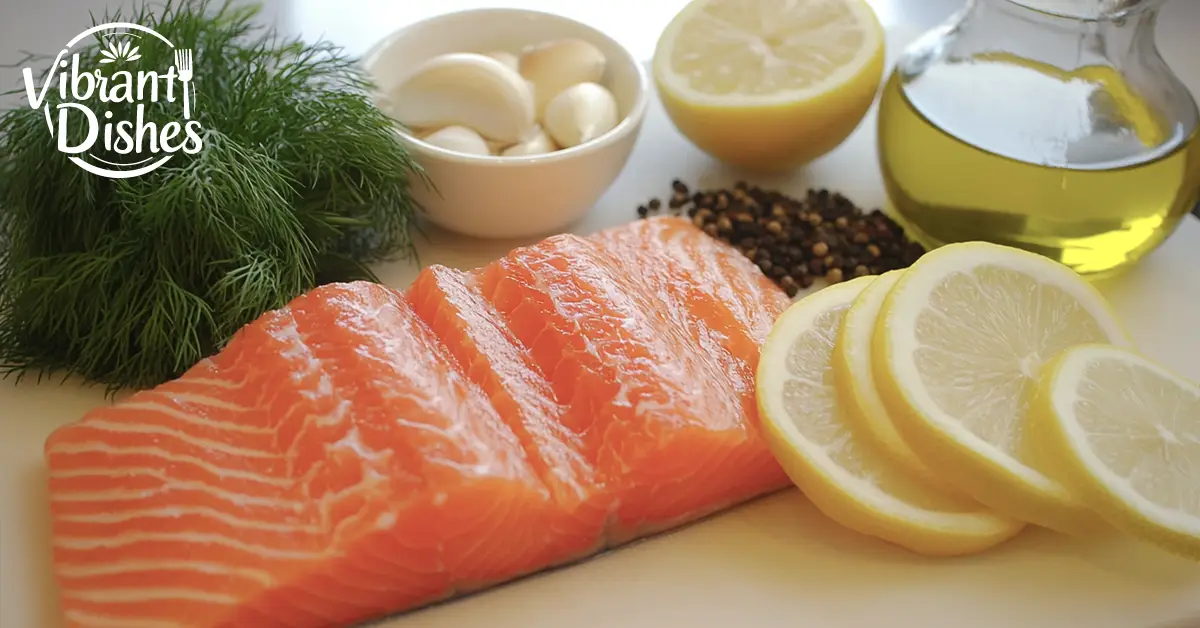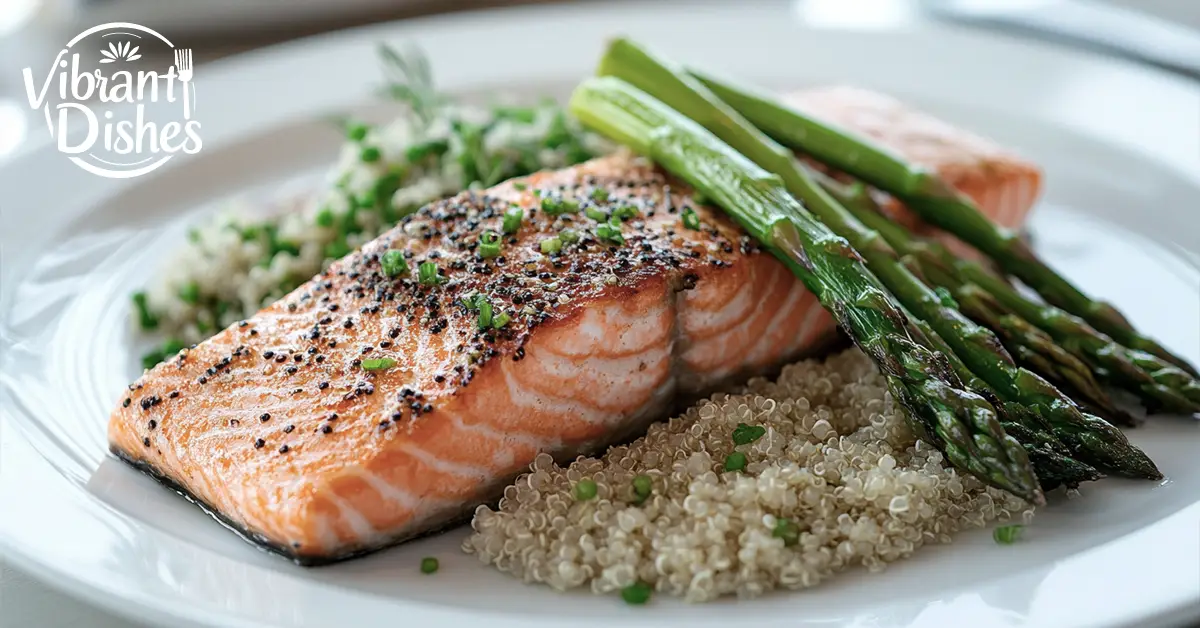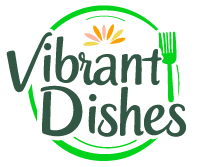When it comes to preparing an exceptional seafood dish, few ingredients rival the quality of wild-caught salmon. Whether you’re grilling by a lakeside fire or baking in your home kitchen, a wilderness salmon recipe ensures a meal that’s both flavorful and nutritious.
But what makes wild salmon superior? Unlike farmed alternatives, wild salmon boasts a richer taste, firmer texture, and higher nutritional value. Not only does it offer essential Omega-3 fatty acids, but it’s also a more sustainable seafood choice.
In this guide, you’ll discover:
- The origins and uniqueness of a wilderness salmon recipe
- The health benefits of wild-caught salmon
- How to choose the best wild salmon for cooking
So, whether you’re an outdoor enthusiast cooking over an open flame or a home chef experimenting in the kitchen, this guide will help you master the perfect salmon dish.
Table of Contents
What is a Wilderness Salmon Recipe?
A wilderness salmon recipe is a cooking method that honors the natural flavors of wild salmon while often using simple, rustic ingredients. The concept originates from outdoor cooking traditions, where freshly caught salmon was roasted over an open fire, smoked, or grilled with minimal seasoning.
Why is it Different from Regular Salmon Recipes?
Unlike conventional salmon dishes, a wilderness-inspired recipe focuses on:
- Minimal processing – Using fresh, unprocessed ingredients
- Cooking methods suited for nature – Smoking, grilling, or open-fire roasting
- Enhancing natural flavors – Using herbs, citrus, and light seasoning rather than heavy sauces
These recipes are ideal for those who enjoy bold, fresh flavors and appreciate the pure taste of wild salmon.
Health Benefits of Wild-Caught Salmon
Wild-caught salmon is not just delicious, it’s also one of the healthiest proteins you can include in your diet. Here’s why:
Rich in Omega-3 Fatty Acids and Heart Health
Wild salmon is packed with Omega-3 fatty acids, which:
- Reduce inflammation in the body
- Lower the risk of heart disease
- Support brain function and mental clarity
Eating wild salmon two to three times a week can significantly improve heart health and cholesterol levels.
High-Quality Protein and Muscle Growth
Salmon is an excellent source of lean protein, which helps:
- Build and repair muscles
- Support weight loss by keeping you full longer
- Boost metabolism
A single serving of wild salmon provides around 22-25g of protein, making it an ideal choice for athletes and fitness enthusiasts.
Loaded with Essential Vitamins and Minerals
Wild-caught salmon is rich in:
- Vitamin D – Supports bone health and immune function
- B Vitamins – Improves energy levels and brain function
- Selenium – A powerful antioxidant that protects against cell damage
Sustainable Seafood Choice – Why It Matters
Choosing wild-caught salmon over farmed alternatives:
- Supports sustainable fishing practices
- Reduces environmental pollution
- Provides a more natural diet for the fish, leading to healthier meat
By opting for sustainably sourced wild salmon, you’re making an eco-conscious choice that benefits both your health and the environment.
Choosing the Best Wild Salmon for Your Recipe
Not all wild salmon is the same! Knowing the differences between species and how to source high-quality, sustainable fish is crucial for the best results.
Wild vs. Farmed Salmon – Key Differences
| Feature | Wild Salmon | Farmed Salmon |
|---|---|---|
| Color | Deep red to vibrant orange | Often lighter pink |
| Texture | Firm and lean | Softer and fattier |
| Taste | Bold, rich flavor | Milder, sometimes bland |
| Omega-3 Content | Higher | Lower (due to unnatural diet) |
| Sustainability | Eco-friendly (if sourced responsibly) | Often linked to ocean pollution |
For the best flavor and nutrition, always opt for wild-caught salmon over farmed varieties.
Best Types of Wild Salmon for Cooking
Not all wild salmon tastes the same! Here are some of the best varieties for cooking:
- King Salmon (Chinook) – Rich, buttery texture with high Omega-3 content
- Sockeye Salmon – Deep red color, firm texture, and bold flavor
- Coho Salmon – Mild, delicate taste, perfect for grilling
- Pink Salmon – Light flavor, great for smoking or canning
- Chum Salmon – Less oily, firmer texture, best for grilling
How to Source Sustainable Wild Salmon
To ensure you’re buying high-quality, responsibly caught salmon, look for:
- Labels like “MSC Certified” (Marine Stewardship Council)
- Salmon sourced from Alaska or the Pacific Northwest
- Trusted seafood markets or direct online sources
For more tips on selecting the best seafood for your recipes, check out this ultimate guide to sustainable seafood.

Essential Ingredients for the Best Wilderness Salmon Recipe
A wilderness salmon recipe isn’t just about the cooking technique—it’s about using the right ingredients to enhance the natural flavor of wild salmon. Whether you’re cooking over an open fire or in your home kitchen, selecting the best herbs, oils, and sides makes all the difference.
Fresh Herbs and Spices That Enhance Wild Salmon
Wild salmon has a naturally rich and slightly sweet flavor, which pairs beautifully with the right herbs and spices. Here are some top choices:
- Dill – A classic herb that enhances the freshness of salmon
- Thyme – Earthy and slightly lemony, perfect for roasting
- Rosemary – Adds depth when grilled or baked with butter
- Cilantro – Ideal for a fresh, zesty kick in salmon tacos or citrus-based marinades
- Paprika & Cayenne – Adds mild heat and smokiness
- Lemon Zest – Brightens up the dish and enhances natural flavors

Best Cooking Oils and Fats for Salmon (Olive Oil, Butter, etc.)
Choosing the right oil or fat can elevate the texture and taste of your wilderness salmon recipe. Here are some of the best options:
| Oil/Fat | Best Cooking Method | Flavor Profile |
|---|---|---|
| Olive Oil | Grilling, roasting | Light, fruity, enhances natural taste |
| Butter | Baking, pan-searing | Rich, creamy, adds depth |
| Ghee (Clarified Butter) | High-heat grilling | Nutty, caramelized undertones |
| Avocado Oil | Pan-searing, high-heat cooking | Mild, high smoke point |
| Coconut Oil | Smoking, grilling | Subtle sweetness, pairs well with tropical flavors |
Complementary Vegetables and Sides
The right side dishes can turn a simple salmon meal into a gourmet experience. Consider these pairings:
- Grilled Asparagus – A classic, slightly charred side that complements salmon’s richness
- Roasted Sweet Potatoes – Adds a touch of natural sweetness and depth
- Quinoa or Brown Rice – Healthy, nutty grains that balance out the dish
- Citrus Slaw – A fresh, tangy contrast to the rich salmon
- Sautéed Mushrooms – Earthy flavors that enhance the dish’s umami profile
For more inspiration on pairing salmon with the perfect side, check out this delicious gumbo greens recipe.
How to Cook Wild Salmon – Step-by-Step Methods
Cooking wild salmon properly ensures that it remains moist, flavorful, and tender. Here are four essential methods to perfect your wilderness salmon recipe.
Pan-Seared Wilderness Salmon Recipe
A crispy, golden-brown crust paired with a juicy interior—this method is perfect for quick meals.
Ingredients:
- 2 wild salmon fillets
- 1 tbsp olive oil or butter
- Salt and pepper, to taste
- 1 tsp garlic powder
- 1 tsp fresh lemon juice
- Fresh dill for garnish
Instructions:
- Pat dry the salmon fillets to remove excess moisture.
- Heat olive oil or butter in a pan over medium-high heat.
- Season the fillets with salt, pepper, and garlic powder.
- Place salmon skin-side down in the pan and cook for 3-4 minutes until crispy.
- Flip and cook for another 2-3 minutes until the flesh is opaque.
- Squeeze fresh lemon juice over the salmon and garnish with dill.

Baked Wild Salmon with Herbs and Garlic
This oven-baked recipe keeps the salmon moist and tender while infusing it with aromatic herbs.
Ingredients:
- 2 wild salmon fillets
- 2 tbsp melted butter
- 2 cloves garlic, minced
- 1 tbsp chopped parsley
- ½ tsp salt
- ½ tsp black pepper
- Lemon slices for garnish
Instructions:
- Preheat the oven to 375°F (190°C).
- Line a baking sheet with parchment paper and place the salmon on top.
- In a small bowl, mix melted butter, garlic, parsley, salt, and pepper.
- Brush the mixture over the salmon.
- Bake for 12-15 minutes or until the fish flakes easily with a fork.
- Garnish with lemon slices and serve immediately.
Grilled Wilderness Salmon with Lemon Butter
Grilling brings out a natural smoky flavor, making it perfect for a wilderness-style recipe.
How to Grill Salmon Perfectly:
- Preheat the grill to medium-high heat and oil the grates to prevent sticking.
- Season the salmon with salt, pepper, and a drizzle of olive oil.
- Place salmon skin-side down and grill for 4-5 minutes per side.
- Baste with lemon butter sauce (melted butter, lemon juice, and fresh herbs).
- Remove from heat and let it rest for 2 minutes before serving.
Smoking Wild Salmon for an Authentic Wilderness Flavor
Smoking is a traditional method that enhances the deep, rich taste of wild salmon.
How to Smoke Salmon at Home:
- Brine the salmon (salt, sugar, water, and spices) for 4-6 hours.
- Preheat the smoker to 180°F (82°C).
- Use wood chips (alder, hickory, or cherry) for a deep, smoky taste.
- Place salmon in the smoker and cook for 2-3 hours, depending on thickness.
- Let it rest before serving to allow flavors to settle.
Pro Tips for the Perfect Wilderness Salmon Recipe
Mastering a wilderness salmon recipe requires attention to detail. Follow these expert tips to get the best results.
How to Prevent Salmon from Drying Out
- Don’t overcook – Wild salmon is leaner than farmed, so it cooks faster.
- Use a thermometer – The ideal internal temperature is 125-130°F (52-54°C) for moist salmon.
- Cook with the skin on – Helps retain moisture and adds crispiness.
Best Cooking Temperatures and Times for Wild Salmon
| Cooking Method | Temperature | Cooking Time |
|---|---|---|
| Pan-Searing | Medium-High Heat | 3-4 mins per side |
| Baking | 375°F (190°C) | 12-15 mins |
| Grilling | Medium-High Heat | 4-5 mins per side |
| Smoking | 180°F (82°C) | 2-3 hours |
How to Add a Smoky, Wilderness Flavor to Your Recipe
- Use wood chips when grilling or smoking.
- Add smoked paprika or chipotle powder for an extra kick.
- Marinate with whiskey, maple syrup, or soy sauce for depth.
With these step-by-step methods and pro tips, you can create a restaurant-quality wilderness salmon recipe right at home. Try experimenting with different seasonings, cooking methods, and sides to find your perfect dish!
The Best Side Dishes for a Wilderness Salmon Meal

A wilderness salmon recipe is flavorful on its own, but pairing it with the right side dishes can elevate your meal to the next level. Whether you prefer something fresh, hearty, or creamy, these sides will perfectly complement the rich, buttery taste of wild salmon.
Fresh Salads That Pair Perfectly with Wild Salmon
A light, crisp salad balances out the richness of salmon while adding a refreshing contrast. Some of the best options include:
- Citrus Avocado Salad – The acidity from oranges and grapefruits brightens up the dish, while avocado adds a creamy texture.
- Arugula and Feta Salad – Peppery arugula mixed with crumbled feta cheese and cherry tomatoes creates a bold, tangy combination.
- Cucumber Dill Salad – Thinly sliced cucumbers tossed in a light lemon and dill dressing offer a cool, refreshing side.
Healthy Grains to Serve with Salmon (Quinoa, Brown Rice, etc.)
For a nutritious and satisfying meal, consider pairing your wilderness salmon recipe with healthy grains such as:
- Quinoa – Packed with protein and fiber, quinoa absorbs flavors well and provides a slightly nutty taste.
- Brown Rice – A heartier option that complements salmon’s richness while offering complex carbohydrates.
- Farro – A chewy, nutty grain that pairs beautifully with a lemon butter sauce or a garlic-infused olive oil drizzle.
Delicious Sauces and Dips to Elevate Your Salmon Dish
The right sauce or dip can enhance the natural flavors of wild salmon and add depth to every bite. Here are some of the best options:
- Dill Yogurt Sauce – A creamy and tangy addition that pairs perfectly with grilled or roasted salmon.
- Mango Salsa – The sweetness of mango mixed with spicy jalapeños and lime juice creates a tropical flair.
- Garlic Butter Sauce – Rich, velvety, and infused with fresh herbs, this sauce is a simple yet decadent pairing.
For another delicious seafood-inspired dish, check out this traditional tuna ceviche recipe.
Frequently Asked Questions (FAQs) About Cooking Wild Salmon
Cooking wild salmon comes with unique challenges, and many home chefs have questions about perfecting their technique. Here are some of the most commonly asked questions with expert answers.
How do you cook wild salmon without drying it out?
Wild salmon has less fat than farmed varieties, meaning it can dry out quickly if overcooked. To prevent this:
- Use a meat thermometer – The ideal internal temperature is 125-130°F (52-54°C) for moist, flaky salmon.
- Cook with the skin on – It helps retain moisture and adds extra crispiness.
- Use a marinade or butter baste – Coating salmon with olive oil, butter, or citrus juices locks in moisture.
What is the best seasoning for wild salmon?
The best seasonings highlight the natural flavor of wild salmon without overpowering it. Some great options include:
- Lemon zest and dill – Classic flavors that enhance the fish’s freshness.
- Garlic and smoked paprika – Adds depth and a subtle smoky taste.
- Maple syrup and soy sauce – A sweet-savory glaze that works especially well for grilled or baked salmon.
How can I tell if my salmon is truly wild-caught?
Many supermarkets sell “wild-caught” salmon, but not all are authentic. To ensure you’re getting the real deal:
- Check the color – Wild salmon is deep red or vibrant orange, while farmed salmon is paler.
- Look for clear labeling – “Alaskan wild-caught” or “MSC Certified” means it’s sustainably sourced.
- Feel the texture – Wild salmon is firmer, while farmed salmon often feels softer and fattier.
Can I cook frozen wild salmon without thawing it first?
Yes, you can cook frozen wild salmon, but for best results:
- Bake it at 400°F (204°C) for 20-25 minutes instead of the usual 12-15 minutes.
- Rinse it under cold water to remove ice crystals before cooking.
- Add extra seasoning and a bit of oil to prevent dryness.
What are the best wines to pair with wild salmon dishes?
Wild salmon pairs beautifully with white wines and even some light-bodied reds. Some top choices include:
- Sauvignon Blanc – Crisp acidity complements citrusy salmon dishes.
- Chardonnay – A buttery Chardonnay works well with grilled or baked salmon.
- Pinot Noir – A light red wine that enhances the fish’s natural richness.
Conclusion: Enjoying Your Wilderness Salmon Recipe
A wilderness salmon recipe is more than just a meal—it’s an experience that celebrates fresh, bold flavors and the beauty of wild-caught seafood.
Key Takeaways:
- Wild salmon is healthier and more flavorful than farmed varieties.
- The best side dishes include fresh salads, whole grains, and flavorful sauces.
- Cooking techniques matter—whether you pan-sear, bake, grill, or smoke, keeping the salmon moist is key.
If you love sustainable seafood, it’s also important to support ethical fishing practices. Learn more about making eco-conscious seafood choices at Seafood Watch.
Now it’s time to experiment, enjoy, and make your own version of this incredible dish. Try different marinades, cooking methods, and sides to create the ultimate wilderness salmon meal!
Wilderness Salmon Recipe – The Ultimate Guide to Cooking Wild Salmon
A simple yet flavorful wilderness salmon recipe that enhances the natural taste of wild-caught salmon with fresh herbs, garlic, and a hint of citrus. Perfect for grilling, baking, or pan-searing, this dish is a healthy and protein-rich option for any meal.
- Prep Time: 5 minutes
- Cook Time: 12-15 minutes
- Total Time: 20 minutes
- Yield: 2 servings 1x
- Category: Lunch
- Method: Grilling, Baking, Pan-Searing
- Cuisine: American
- Diet: Gluten Free
Ingredients
- 2 wild salmon fillets
- 1 tbsp olive oil or melted butter
- 2 cloves garlic, minced
- 1 tsp lemon zest
- 1 tbsp fresh dill, chopped
- ½ tsp salt
- ¼ tsp black pepper
- Lemon wedges for serving
Instructions
- Preheat your grill, oven, or pan to medium-high heat.
- Pat dry the salmon fillets and coat them with olive oil or butter.
- Season with garlic, lemon zest, dill, salt, and pepper.
- Cook:
- Grill: 4-5 minutes per side.
- Bake: 375°F (190°C) for 12-15 minutes.
- Pan-Sear: 3-4 minutes per side.
- Serve immediately with fresh lemon wedges.
Notes
- For extra smoky flavor, use wood chips when grilling.
- Adjust cooking time based on thickness of fillets.
- Pair with quinoa, roasted vegetables, or a fresh salad.
Nutrition
- Serving Size: 1 salmon fillet
- Calories: 280
- Sugar: 0g
- Sodium: 320mg
- Fat: 14g
- Saturated Fat: 3g
- Unsaturated Fat: 10g
- Trans Fat: 0g
- Carbohydrates: 2g
- Fiber: 0g
- Protein: 35g
- Cholesterol: 85mg
Keywords: Wilderness Salmon Recipe


